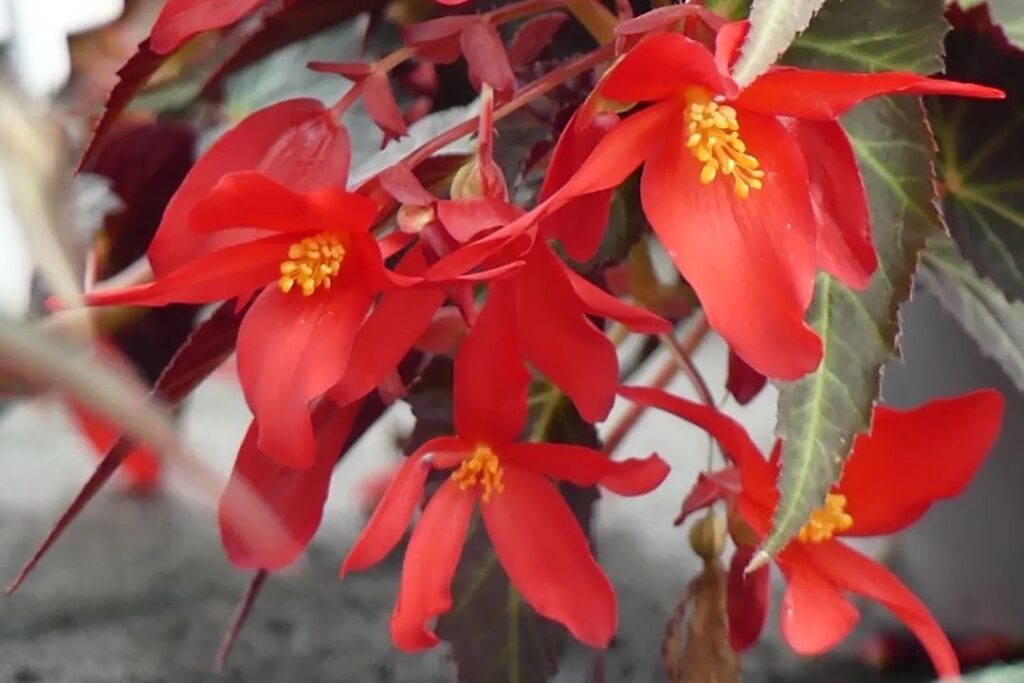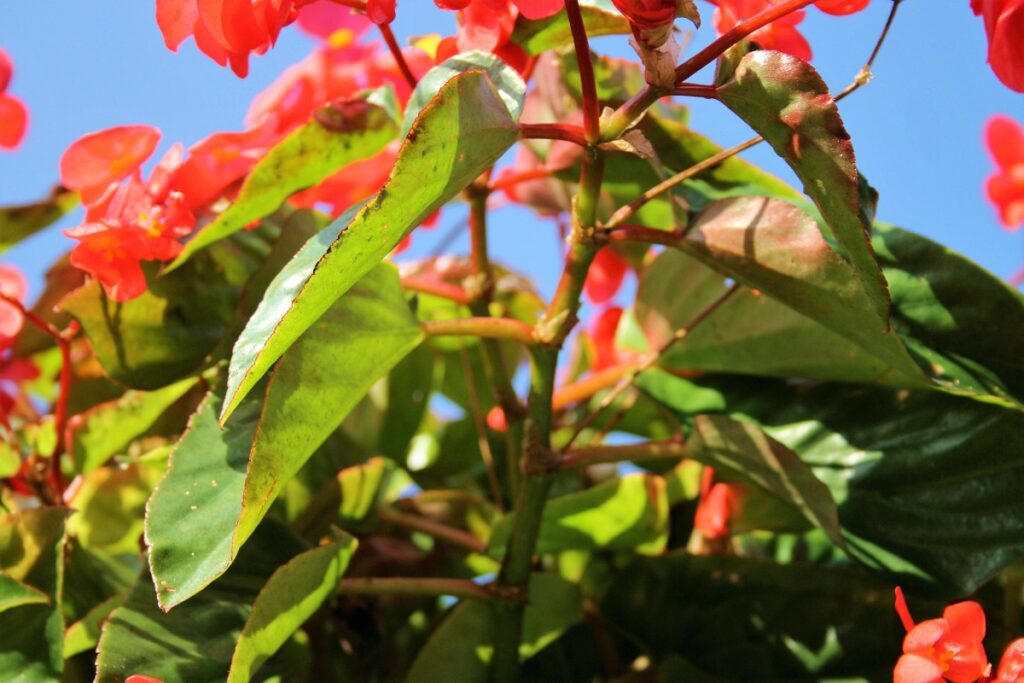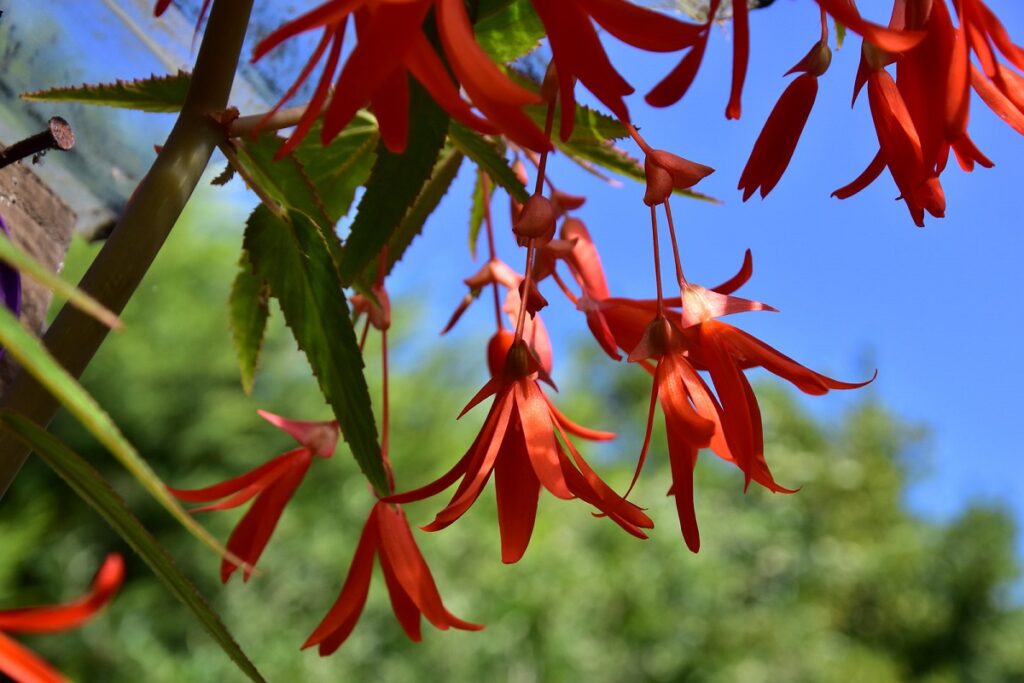Are you looking for an interesting and unique plant to add a bit of life to your home or garden? If so, Begonia boliviensis may be a perfect choice! This spectacular plant is not only ornamental but also easy to care for. With its striking dark green foliage and white-veined leaves, it can make a beautiful addition to any space. In this article, I’ll provide you with all the information you need to keep your Begonia healthy and thriving—from potting tips to propagation methods. So if you’re feeling inspired by these stunning blooms, let’s get started on our guide to Begonia boliviensis care and propagation!

Contents
Begonia Boliviensis Care Guide
Light Requirements
I’m sure you want to keep your Begonia boliviensis healthy and thriving, so let’s start with the light requirements! This plant needs ample sunlight in order to thrive. Direct sunlight is best, but natural light will do just fine too. However, if it receives not enough light, its leaves may become leggy and pale. The ideal spot for this plant would be near a south-facing window that gets plenty of direct sun throughout the day. If that isn’t possible, then setting up a fluorescent or LED bulb near the pot should help provide adequate lighting.
Now that you know what type of lighting your Begonia boliviensis needs, make sure to give it all the love and care it deserves! With proper attention and maintenance, this gorgeous houseplant can brighten up any room in no time!
Watering Requirements
Now that we’ve discussed the light requirements for growing Begonia boliviensis, let’s move on to watering. When it comes to watering your plant, you want to make sure you’re providing water to the soil and not just spraying water onto the leaves. Your begonia will do best in well-draining soil and too much moisture can lead to root rot.
When it comes to watering recommendations, keep an eye out for wilting and adjust accordingly. If your begonia is planted in a pot with drainage holes and the soil feels dry when testing a few inches down into the pot, then it’s time to give the plant a bit more of a drink. Allow excess water to run off freely at the base of the pot before removing any remaining standing water after about 10 minutes or so—this helps ensure that all parts of the roots are being hydrated evenly.
Try to stick with a consistent watering schedule that keeps the soil moist without drowning them—usually, just once every two weeks is enough!
Soil Requirements
When it comes to soil requirements, Begonia boliviensis is quite particular. They need well-draining soil that contains organic matter such as peat moss or compost. To ensure healthy growth and development, the soil should be light enough for plenty of air circulation around their roots. It’s also important to keep your plant in slightly acidic soil with a pH between 5.5 and 6.5 for optimal results.
To make sure your begonia has everything it needs to thrive, you can add some fertilizer during planting season, but regular feeding isn’t necessary unless the plants show signs of nutrient deficiency.

Fertilizer Requirements
Fertilizing begonias is crucial for keeping them in optimal health. Begonia boliviensis, like all begonias, need to be fertilized with a diluted fertilizer every month during their growing season. This will help them thrive and look beautiful throughout the year!
When fertilizing your plant, here are some tips:
- Use an organic liquid fertilizer or granular soluble blend specifically designed for flowering plants.
- Feed the soil around the roots of the plant once per month using a dilute solution that’s half as strong as what’s recommended on the package instructions.
- Add peat moss or sphagnum moss to increase acidity levels in your soil mix or potting medium.
- Incorporate plenty of composted organic matter into your planting bed before planting your Begonia boliviensis.
- Try not to over-fertilize; too much can cause root burn and nutrient toxicity which may lead to further damage down the line.
It’s important to note that you should always check if any signs of nutrient deficiencies appear (like yellowing leaves), and adjust accordingly by providing extra nutrients through foliar feeding with a weak solution of liquid fertilizer. Give your Begonia boliviensis just enough nutrition so it grows healthy—don’t overdo it!
Temperature And Humidity Requirements
When it comes to temperature and humidity requirements, Begonia boliviensis needs a tropical environment. It prefers temperatures of 65-80 degrees Fahrenheit during the day with nighttime lows of 55-65 degrees. It also requires high levels of humidity for the best growth. This can be easily achieved by misting the leaves once or twice daily or placing the plant in a terrarium environment where naturally humid conditions can be maintained more easily.
Be sure not to place this begonia near any air vents that might dry out its leaves too quickly! Keeping an eye on your plant’s overall health is key here—if you notice browning leaf edges or stunted growth, increase the humidity around your plants as soon as possible.
Common Pests
As we move forward in this guide, one thing that is sure to strike fear into the hearts of even the most experienced Begonia boliviensis caretaker is pests. From leaf spots to spider mites, common pests can be a headache for any gardener.
Fortunately, when it comes to keeping your begonia safe and healthy there are some easy steps you can take to minimize the risk of pest infestations. Regularly check your plant for signs of pests like yellowing leaves or discolored patches. If you notice these issues early on they will be much easier to manage before they become a more serious problem.
Additionally, make sure that your plants have adequate airflow and avoid overcrowding them as this increases the chances of an infection spreading quickly throughout your garden. Lastly, regular inspection and pruning help keep away unwanted guests while also helping maintain the overall health of your plants!
Common Diseases
When it comes to diseases, begonias are quite resilient. However, some common ailments can still afflict them if neglected. Root rot is one of the most frequent problems for these plants; their signature dark leaves may begin to yellow and fall off if they’re overwatered or kept in a pot that’s too large. Powdery mildew may also occur when temperatures drop below 40 degrees Fahrenheit. The disease will appear as white spots on the foliage and should be treated with fungicides accordingly.
It’s important to closely monitor your Begonia boliviensis plant and check its leaves regularly, as this kind of preventative care is key to keeping it healthy and thriving! Be sure you’re providing proper drainage, air circulation, light levels, humidity, temperature range and soil quality—all essential elements for optimal growth. With just a bit of attention and thoughtfulness towards its needs, your begonia can keep looking beautiful year-round!

Repotting Requirements
Ah, repotting. It can be a tricky process to get right, but with enough knowledge and preparation, it can go smoothly!
Repotting your Begonia boliviensis is an important part of plant care as it can help encourage growth. It’s best to repot this type of begonia when it starts to outgrow its current pot or container, usually every year or two. When you’re ready to repot, make sure that you prepare the new pot with a rich soil mixture and ensure there are drainage holes at the bottom for excess water to escape.
Once the Begonia boliviensis has been removed from its old pot, carefully remove any damaged roots and trim off any dead leaves or stems. Plant the Begonia boliviensis in the prepared pot, making sure that each root is covered with soil while keeping the leaves above ground level. Finally, keep the soil moist but not wet and place it in bright indirect light away from direct midday sun rays.
How to Propagate Begonia Boliviensis
Propagating Begonia boliviensis is a relatively easy task. It’s best done during the spring and summer months when it has plenty of natural light and warm temperatures to flourish in. Here are some key steps for propagating this tropical plant:
- Use clean scissors or gardening shears to take 4-6 inch stem cuttings from an established, healthy specimen. Make sure that each cutting you take has a healthy leaf on them.
- Prepare small pots with drainage holes using a soilless medium such as sphagnum moss, perlite, vermiculite, sand, coconut coir peat moss mix or even just water. Make sure to moisten the medium prior to placing the cuttings inside.
- Dip the end of your cuttings into a rooting hormone before planting them into the medium.
- Insert your cuttings about an inch deep into the prepared medium.
- Place your newly planted potted begonias somewhere with high humidity and indirect bright light but not full direct sun exposure which can cause the burning of its delicate foliage.
Water regularly once every few days making sure not to overwater otherwise root rot may occur leading to the possible death of your new specimens. Keep an eye out for pests or diseases as these can spread quickly if left unchecked throughout multiple plants within one area.
Conclusion
I hope this Begonia boliviensis care and propagation guide has been helpful to you. It’s important to understand the different requirements of these beautiful plants in order to keep them healthy and thriving! As you can see, terrariums can make good growing environments for Begonia boliviensis if you take into account the specific needs of this species.
Now that you have a better understanding of how to best care for this exotic houseplant, it’s time to get started on your own adventure with Begonia boliviensis! With proper attention and love, I’m sure your plant will surprise you with its extraordinary beauty. So don’t hesitate—enjoy every moment of watching your begonias grow bigger, healthier and more vibrant each day!
Finally, don’t forget that nurturing a living creature requires patience and dedication—something we could all use a bit more of in our lives. So let’s begin this journey together by taking those first steps towards creating an amazing home environment filled with gorgeous begonias!
